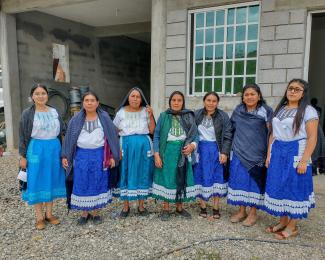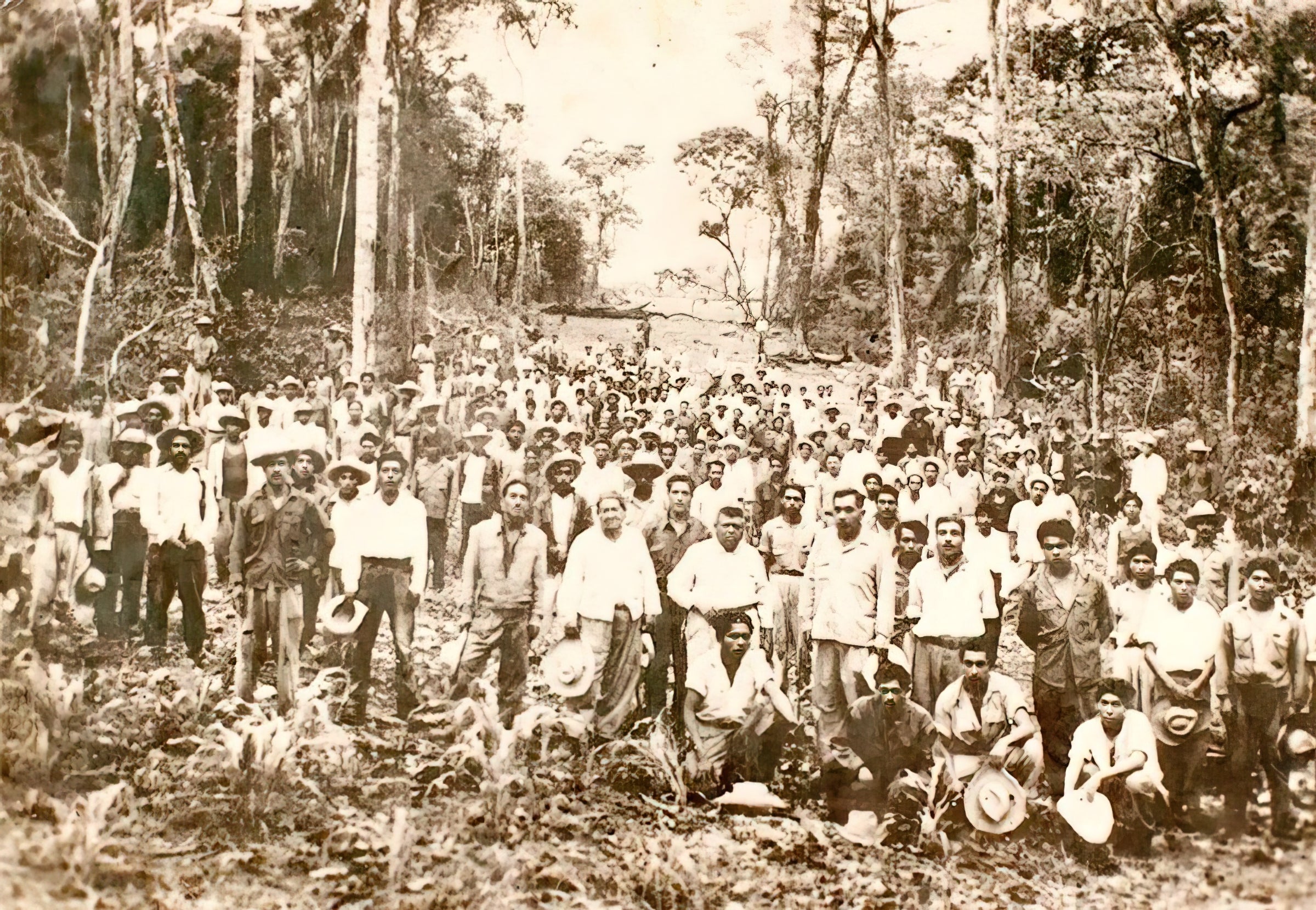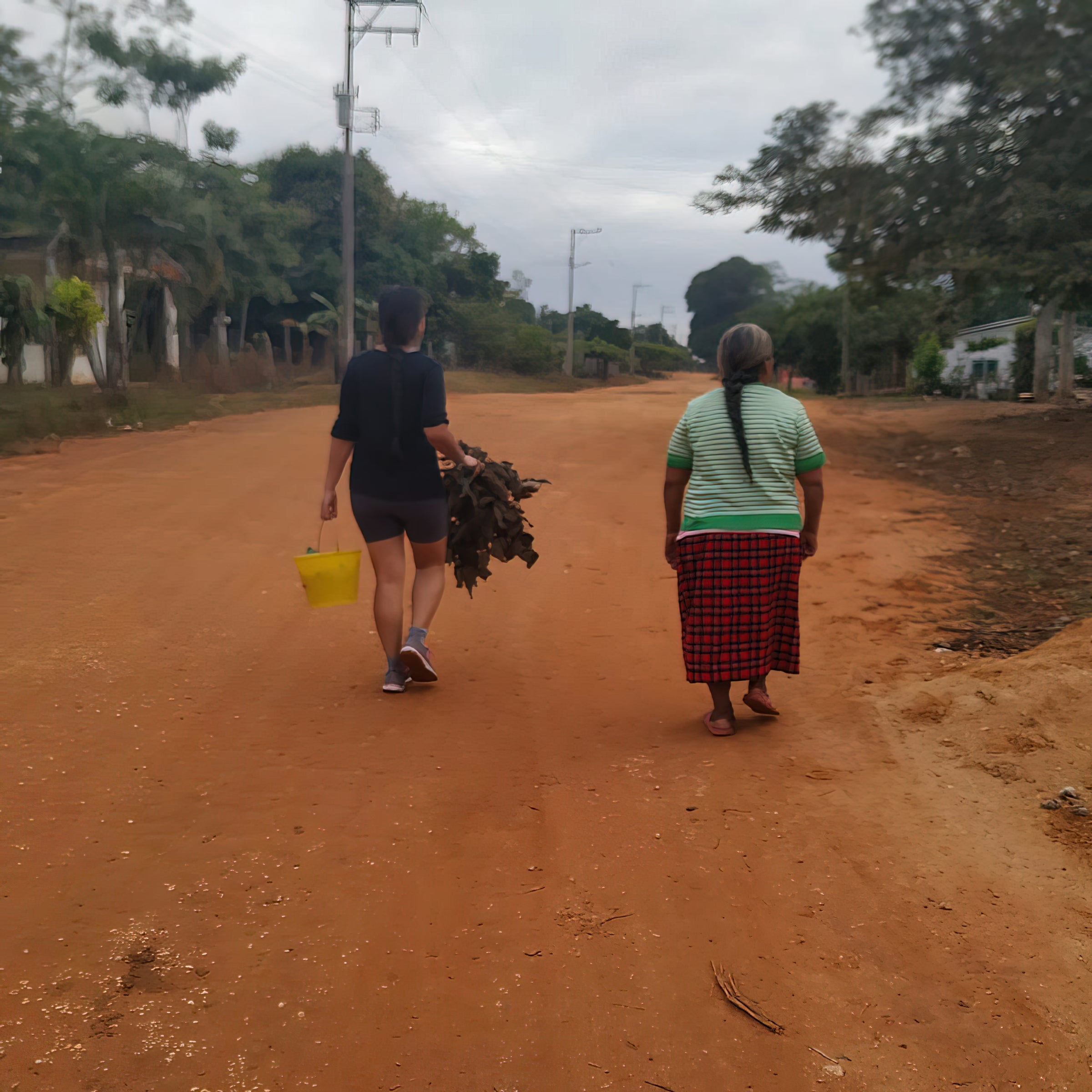
Between 1950 and 2010, 230 languages went extinct, according to the UNESCO Atlas of the World’s Languages in Danger. Today, a third of the world’s languages have fewer than 1,000 speakers left. Every two weeks a language dies with its last speaker; 50 to 90 percent of remaining languages are predicted to disappear by the next century unless action is taken now. The world’s remaining biodiversity hotspots are home to 70 percent of all languages spoken on Earth, showing strong geographic co-occurrence of Indigenous language speakers and biodiversity.
I was born and raised in Abasolo del Valle, Mexico, a community that is rapidly losing its language. Few people my age speak Mixtec, and I don’t know any children who speak it. Many have only partial knowledge of Mixtec; they understand it and do not speak it, either because they cannot, or because they do not dare due to fear or shame. The Spanish language education system, together with Mexico’s war against Indigenous Peoples through systemic discrimination, is very effective in silencing our languages, as language is a very prominent cultural trait.
When I was a child, Mixtec was not spoken in my house so I could not learn it. It was the language of our grandparents and we heard it at their home, if we visited them. From the brief time I lived with them, I could only learn a few words. It didn’t help that in my community, Mixtec was not used in public and is still reserved for households. This story, which I share with a large part of my generation, is explained by the very special context of Abasolo.
We are a migrant community that breathes and grows in the humid heat of the southern Veracruz jungle. Mixtecos in Veracruz? Yes, we live outside of the historically Mixtec territory, now fragmented and distributed among the states of Oaxaca, Puebla, and Guerrero. Some 70 years ago, two Mixtec groups from Oaxaca met in the middle of the Veracruz jungle, machetes in hand, opening a gap where they had been promised a piece of land. They came together to establish a town. My grandparents were in one of those groups, the least numerous, made up of people from Santo Domingo Nuxaá, Oaxaca.

Founders of Abasolo del Valle circa 1951. Photo courtesy of the historical archive of the community.
In the harsh conditions of migration, we learned to face adversity with strength and community work, but we also stopped transmitting our language. Being outside our territory makes us more susceptible to losing it, because the number of people with whom one can speak and spaces of use decrease. In community spaces such as the assembly hall, we use Spanish because it is more practical, given the presence of families who speak other languages.
At the age of 12, I recognized the value of our family language and I asked my grandfather, Telésforo Martínez, to teach me. A curious man with a passion for knowledge, he supported my initiative and began to teach me words, which I wrote down in a notebook. Back then we were unaware of the heated discussions surrounding Mixtec spelling, but it was enough that I understood my scribbles. Unfortunately, after a while, I also had to emigrate—that has always been our destiny—and I gave up my apprenticeship.
“I am Mixtec, but I do not speak Mixtec” is a phrase that opens discussions in Mexico, where “Indigeneity” is evaluated based on the language. Many consider that if you don’t speak your Indigenous language, you are not Indigenous. Until recently, the Mexican State measured the number of Indigenous people in the country by counting the number of Indigenous language speakers. This is a tricky approach, since that same State has been openly fighting our languages and cultures to assimilate us. Although the method has changed in the official censuses, it has affected the way in which people evaluate us and in the way in which some of us evaluate ourselves. This is what happened to me: at 18, I still did not think I was Mixtec because I did not know the language. Mixtecos were my grandparents, maybe my mother, but not me.
I returned to study Mixtec years later, living in a city far from my hometown. A teacher from my community taught me by video call once a week. However, I soon ran up against the limits faced by efforts to teach and learn minority languages like ours—lack of didactic materials, lack of linguistic studies, lack of advanced or long-term programs, among many other obstacles.
I abandoned the dream of learning Mixtec for a while until one day, being already a majority language professional and with more economic autonomy, I decided that the best thing was to learn Mixtec in an immersive environment. I had three options: Abasolo, where I was born; Nuxaá, where my grandparents were born; or San Juan Mixtepec, the origin of the other founding group. I decided on the latter, mainly because of the strength that the language has among its people and because of the solid relationships it maintains with Abasolo.

Verónica Aguilar and her aunt on a street in Abasolo. Photo courtesy of Verónica Aguilar.
I started saving so that I could live without working for six months. Sometimes it seemed very risky. I was worried about isolating myself professionally and academically. My friends asked me, what are you going to live on? Are you going to get used to it? I had been living in cities for almost 20 years and my career was going quite well. But I could no longer postpone that dream, which became even more urgent after the passing of my grandfather.
The pandemic delayed my plans for a few weeks, but on September 19, 2020, I arrived in Mixtepec, which is in what has been Mixtec territory since long before Mexico existed. Some friends welcomed me into their home so that I could learn the language in the best possible way: in the warmth of the stove and of the family. This is how I started this third stage of my learning, visiting a home almost daily where three generations live in this language that had been denied to me.
Those six months became an indefinite amount of time because, along with the language, I was embraced by community life. Understandably, learning methods, exposure time, and my availability have had their ups and downs. I now have a full-time job and struggle to maintain discipline in the long and complex process of acquiring a second language without teaching materials. But I am optimistic because I now understand more and I am overcoming my fears of speaking in Mixtec.
I had the opportunity to ask myself many questions during my 20s about who I was and the languages I did not speak. Now, in my 30s, I know who I am and define my identity on my own terms. However, if I have to define myself by the linguistic parameters of the Mexican State, I have to do so with a negation: I am the one who does not speak, the daughter of the migrants. I’m Mixtec, but I don’t speak Mixtec. But I am going to regain my language, not to be officially recognized, not as an obligation, but as a right, the one that every child has to communicate with their grandparents in the language in which they best express their affection.
According to the stereotype, Mixtecs are migrants. That is the history of my community, my family, and mine. But we do not migrate out of pleasure. We do so out of necessity, because the inequalities in this country and colonization have forced us to do so. In migration we already lost a lot, and one of our remaining treasures, the language, is in grave danger. We do not have the obligation to maintain it, but we do have the right. And for that right, many of us will be working
and fighting for years to come.
-- Verónica Aguilar (Mixtec) is Cultural Survival Keepers of the Earth Fund Program Assistant.
